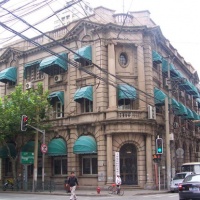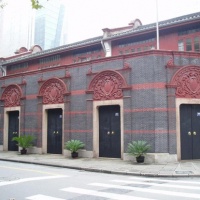- Home Page
- Fact Tours
Our sample tour itineraries of China and China travel packages are sorted by theme and available at competitive prices, you can browse what tours are right for you for your trip to China.
Popular China Tour Packages

Custom Tour Packages to China and Ask Our Experts for Free Enquiry !
- Coach Tours
- Destinations
Beijing, the capital of China. Its art treasures and universities have long made it a center of culture and art in China.
Beijing Top Attractions
Beijing City Tours
Shanghai, the cultural and economic center of East Asia. It renowned for its historical landmarks, the extensive and growing skyline.
Shanghai Top Attractions
Shanghai City Tours
Best China Tours with Shanghai
Xi'an, having held the position under several of the most important dynasties. It is the top destination to explore the facts of Chinese history.
Xi'an Top Attractions
Xi'an City Tours
Best China Tours with Xi'an
Huangshan boasts its culture, beautiful rivers, villages and mountains. It's home to 2 UNESCO World Heritage Sites and the Mecca of photographers.
Huangshan Top Attractions
Huangshan City Tours
Best China Tours with Huangshan
Sichuan is the cradle of the Shu culture, panda, mahjong, teahouse and spicy food. The province ranks first in China by number of UNESCO World Heritage Sites. It is called "the Heaven of Abundance".
Sichuan Top Attractions
Sichuan Tour Packages
Best China Tours with Sichuan
Yunnan, literally means the south of colorful clouds, due to its beautiful landscapes, mild climate and diverse ethnic cultures and traditions, is one of China's major tourist destinations.
Yunnan Top Attractions
Tibet, the nearest land to the sky, is known for its breathtaking landscape, splendid culture, art, buildings, and mysterious religions.
Tibet Top Attractions
Tibet Tour Packages
Best China Tours with Tibet
Explore the lost civilizations by riding a camel! Travel across the Gobi and the desert, and over the high mountains. Our Silk Road tours including different sections of the Silk Road in China.
Silk Road Top Attractions
Silk Road Tour Packages
Best China Tours with Silk Road
Guilin, an internationally-known historical and cultural city, has long been renowned for its unique karst scenery. Its vicinities are the paradise of hiking, caving, rafting, biking and countryside exploring.
Guilin Top Attractions
- China Facts
- China Hotels
- Travel Photos
Attractions
- Longtang (Old Lane) Culture
- Huangpu River Cruise
- Kunqu Opera
- Shanghai Acrobatics Show
- Shanghai Longtang Life
- Stone-framed-door Residence Culture in Longtang
- Shanghai Ocean Aquarium
- Shanghai Science and Technology Museum
- Shanghai Urban Planning Exhibition Center
- Century Park
- Duolun Lu
- Jewish Sites in Shanghai
- Shanghai Old Concession Areas
- Xintiandi
- Yuyuan Market
- The Bund
- Oriental Pearl TV Tower
- Nanjing Lu
- Zhujia Jiao Water Town
- Shanghai Museum
- Jade Buddha Temple
- Yu Garden
Jewish Sites in Shanghai
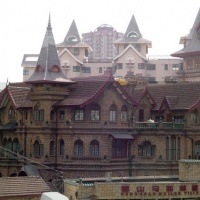 Shanghai Hongkou District is known as the Oriental Noah's Ark for it was once the refuge of the Jews. At the beginning of World War II, 30,000 Jewish refugees fleeing Adolf Hitler poured into Shanghai where, even among the large international settlements, the local residents kindly offered food and medicine for these displaced people. They stood out, a distinct community with its own hospitals, theaters, schools, bakeries, stores, cafes, synagogues, schools, clinics, cemeteries, sports leagues and even a Jewish newspaper all flourished there. The Jewish community thrived in the Hongkou.
Shanghai Hongkou District is known as the Oriental Noah's Ark for it was once the refuge of the Jews. At the beginning of World War II, 30,000 Jewish refugees fleeing Adolf Hitler poured into Shanghai where, even among the large international settlements, the local residents kindly offered food and medicine for these displaced people. They stood out, a distinct community with its own hospitals, theaters, schools, bakeries, stores, cafes, synagogues, schools, clinics, cemeteries, sports leagues and even a Jewish newspaper all flourished there. The Jewish community thrived in the Hongkou.
Life was not always jolly, of course, the Japanese invaders later herded them into Hongkou ghetto, where food was scarce and disease rampant. But in Shanghai, unlike much of the world, nearly all the Jews survived the war. After the World War II, most Jews relocated to Israel and the rest to America. Today some Jewish sites are still well-kept in Shanghai to reveal this unique stretch of history:
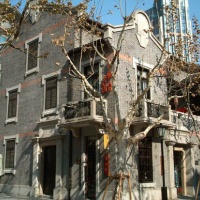 (1) Ohel Rachel Synagogue and Shanghai Jewish School
(1) Ohel Rachel Synagogue and Shanghai Jewish School
The Ohel Rachel Synagogue (or Ohel Moishe Synagogue) served as the spiritual heart of this Jewish community, and currently houses the Museum for Jewish Refugees. It is the most important Jewish Community building still standing today. It was the primary synagogue for the Sepharic (mainly lraqi) community in Shanghai. It was used from 1920 to 1952, except for about two years during the war. Founded by Sir Jacob Sassoon (from Hong Kong) in memory of his wife, and consecrated in 1920 by Rabbi W. Hirsch, it is now occupied by Shanghai Education Bureau. Appointments to visit are required (and can be arranged by the Jewish Community, 021 6289 9903). The Shanghai Jewish School building still stands on the left. The school was first founded in 1900 by D. E. J. Abraham on the grounds of the Shearith Israel, and transferred here in 1932 by Horace Kadoorie. All other buildings are post-1952. There used to be a Mikveh in the space next to the school (where there is a six-story building now), and there was a separate entrance on Xinzha Road (still visible). The main entrance is located at 500 Shaanxi North Road.
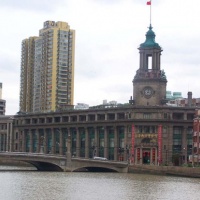 (2) Pacific Gardens & Toeg House
(2) Pacific Gardens & Toeg House
As the synagogue was nearby, Shaanxi North Road had many lraqi Jewish residences. Pacific Gardens was popular for many upper middleclass lraqi families. For example, the Abrahams lived in #7. Holders of British passports, they spent much of the war in the Long Hua Prison for Allied citizens. The Toegs were in the second tier of rich Iraqi Jews; their residence housed ten Chinese families after they left in 1951. The Toegs were very involved in the community and synagogue activities and during the war, The Torah scrolls and all furniture were stored in their house when the Japanese occupied the synagogue.
(3) Old Market Area. Uptown Theater, Jewish Shops
Walk down Shaanxi North Road and turn west (right) on Nanjing Road. Here were many Jewish small retail shops because of the high concentration of customers. There would have been a multi-storied market on the left (east side), roughly where the back of a new skyscraper is Today. People of all nationalities would shop here and all kinds of languages could be heard. There was a kosher butcher inside. The Uptown Theatre was a well-know landmark to nearby residents and many would attend the new films there, and still stands at the southwest corner of Nanjing Road and Shaanxi North Road. If you head west towards the Portman, you would pass a Jewish bakery that was once where the Mandarin Hotel is now.
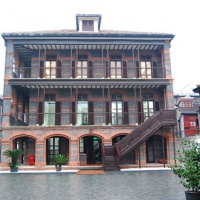 (4) Exhibition Hall, onee Hardoon Gardens
(4) Exhibition Hall, onee Hardoon Gardens
To the local Shanghainese, Sir Silas Hardoon remains the most famous foreigner in old Shanghai. He was considered among the richest people in Shanghai and it is rumored that he was forced to pay for the paving of Naming East Road because of his wealth and ownership of 40% of the buildings on the street. Although he built Beth Aharon after a dream, he was not known for having close ties with the Jewish community and even married a Eurasian woman. They adopted over 20 orphans and built Japanese and Chinese gardens on their huge estate right in the middle of town. The whole complex, now known as the Shanghai Exhibition Center (across from the Portman Ritz-Canton and originally called the Chinese-Soviet Union Friendship Hall), was his residence. Old Shanghainese still know it as Hardoon Gardens. The street immediately to its west (Tongren Road) was once called Hardoon Road.
(5) Kadoorie, Abraham, Hayim, Moses, and Ezras
Some of these homes are not easily accessible anymore because of walls or for reasons of ownership. Sir Horace Kadoorie was one of three richest in the community (with Hardoon and Sassoon) and he built a magnificent Marble Hall as his residence. It still stands Today, now across from the Equitorial Hotel (near the Hilton Hotel). You can probably sneak a peak without an appointment as it is used as the city's "Childrens's Palace" for youth extracurricular activities. The Ezra House on Huai Hat Road (originally Avenue Joffre) is also quite impressive, but it is currently an army compound and you can only see it from the street. The Ezras were among the first Zionists in Shanghai and started Israel's Messenger in 1904. D.E.J. Abraham was the president of the Sephardic Community for many years and his huge mansion was the place of Shabbat football (soccer) matches during the 1930s. It is also occupied by the army and hard to see. The Hayim house was behind it. The Moses house on Huashan Road was very close to the British School and is now part of the East China Hospital.
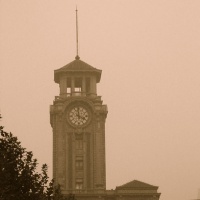 (6) Jewish Club, now Music Conseratory
(6) Jewish Club, now Music Conseratory
The Russian Jewish Club eventually became a club for the whole community. Since the Russians were the greatest Zionists in Shanghai, news of the establishment of the state of Israel, including Prime Minister David Ben-Gurion's speech, was read to the community at the Jewish Club in 1948. The site is now used by the Shanghai Music Conservatory. As the Jewish influence on Shanghai's music scene was probably greater than in any other area, this is also a fitting tribute. In fact, Jews from central Europe and Russia trained many who would become the city's leading musicians for decades. Located on Fenyang Road, south of Huai Hat Road.
(7) Jewish Hospital, now Eye-Nose Hospital
The Shanghai Jewish Hospital was originally called the B'nai Brith Polyclinic, and founded in 1934; it adopted its new name in 1942 and was headed by Dr. Max Steiman. Today, the site is the Shanghai Ear, Nose, and Throat (Otolaryngological) Hospital. While not as great as in music, the Jewish influence on medicine was also significant. Jewish German doctors played a large role after their arrival in the late 1930s. Located at 83 Fen Yang Road (formerly rue Pichon).
This building was the center of the Community's sports activities. Originally run by the Russians, it later became a community-wide organization. Jews led in boxing in Shanghai, and had strong teams entering football (soccer) and other competitions. Leo Meyer, a German refugee, had been a star in Dusseldorf and he led the refugee team to a close second in the 1939 Shanghai league championship. During the summer of the same year, Meyer led his team to victory in the minisoccer championship. In this part of town (and maybe even inside the Jewish Recreation Club itself), a number of Mir Yeshiva students taught local Jews about Jewish tradition. Although the great majority of the famous Yeshiva's students studied elsewhere, the classes held here would eventually lead a number of Jews from various communities to join the Mir after the war. Located on Mao Ming North Road around the corner from the Abraham house.
(9) Original Cemetery
Originally known as the "Israeli Cemetery" and later as the "Mohawk Cemetery" because it was on Mohawk Road, this was the first of four Jewish cemeteries in Shanghai. When first opened in 1862, this location was beyond the Western edge of the city. Later, it would border the city's Racecourse. The racecourse tower and grandstands can still be seen across the street, the former now an art museum, the latter a host for offices and a museum for the new opera house. The four Shanghai Jewish cemeteries were moved to the western suburbs in the 1950s and later were destroyed during the Cultural Revolution. There remain two Kadoorie graves in the Soong QinLing Park in Hongqiao. The cemetery is located in the small park on the corner of Huang Pi Bei Road and Nanjing Road.
Walk down Nanjing Road from the cemetery towards the Bund. You will see the racecourse tower on the right. Make the first left onto Xinchang Road. Follow this narrow street down one block. On the left side, you will see a building decorated by Stars of David. This style of building was used by a number of Sephardim throughout East Asia and can be seen on a number of buildings in Singapore among other places. Sir Silas Hardoon might have built the building as 1) Nanjing Road was reputed to be 40% built by him; 2) he was famous for building cheaper buildings for commoners; and this building fits the location and description of his construction.
(11) Beth Aharon Synagogue
The Beth Aharon synagogue was located where the single office building stands on Hu Qiu Road (#42; originally #50 Museum Road) off of Beijing Road and near the Bund. It was built in 1927 by Sir Silas Hardoonin his father's memory and demolished in 1985. One of the large stone Menorahs was saved and is preserved by the Shanghai Museum. It was loaned to the Holocaust Museum in 2000 for an exhibit. When the Mir Ygshiva escaped to Shanghai, they continued their studies in the thenempty Beth Aharon Synagogue miraculously, the seats were exactly enough for their 400 members!
 (12) Monument in Memory of Jewish Refugees
(12) Monument in Memory of Jewish Refugees
Monument in Memory of Jewish Refugees is located in Huoshan Park, the heart of the "Designated Area for Stateless Refugees". In April 1994, in order to commemorate this unforgettable history, the Shanghai Municipal Government and Hongkou District Government built this monument.
All these Jewish sites and characteristic architectures in Shanghai reflect the activities of Jews in various fields in Shanghai. They are important parts of the city heritage of Shanghai. For years, they have attracted many tourists from all over the world.
Questions & Comments
Home | About Us | Partnerships | Terms & Conditions | Privacy & Security | Payment Guide | Resource Links| Sitemap
Email: contact@chinafacttours.com, Tel: +86-773-3810160, Fax: (+86) 773-3810333
Copyright © 2008-2020 China Fact Tours. All rights reserved
![]()










